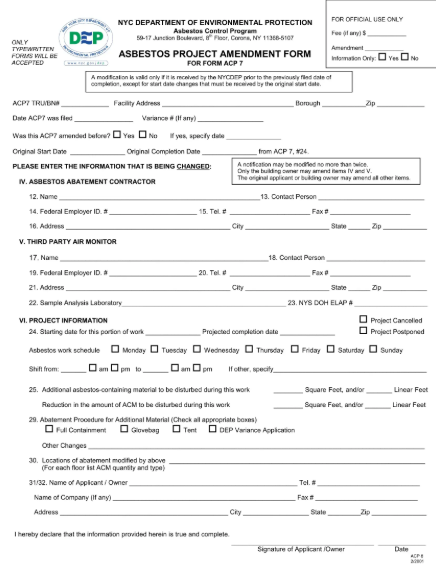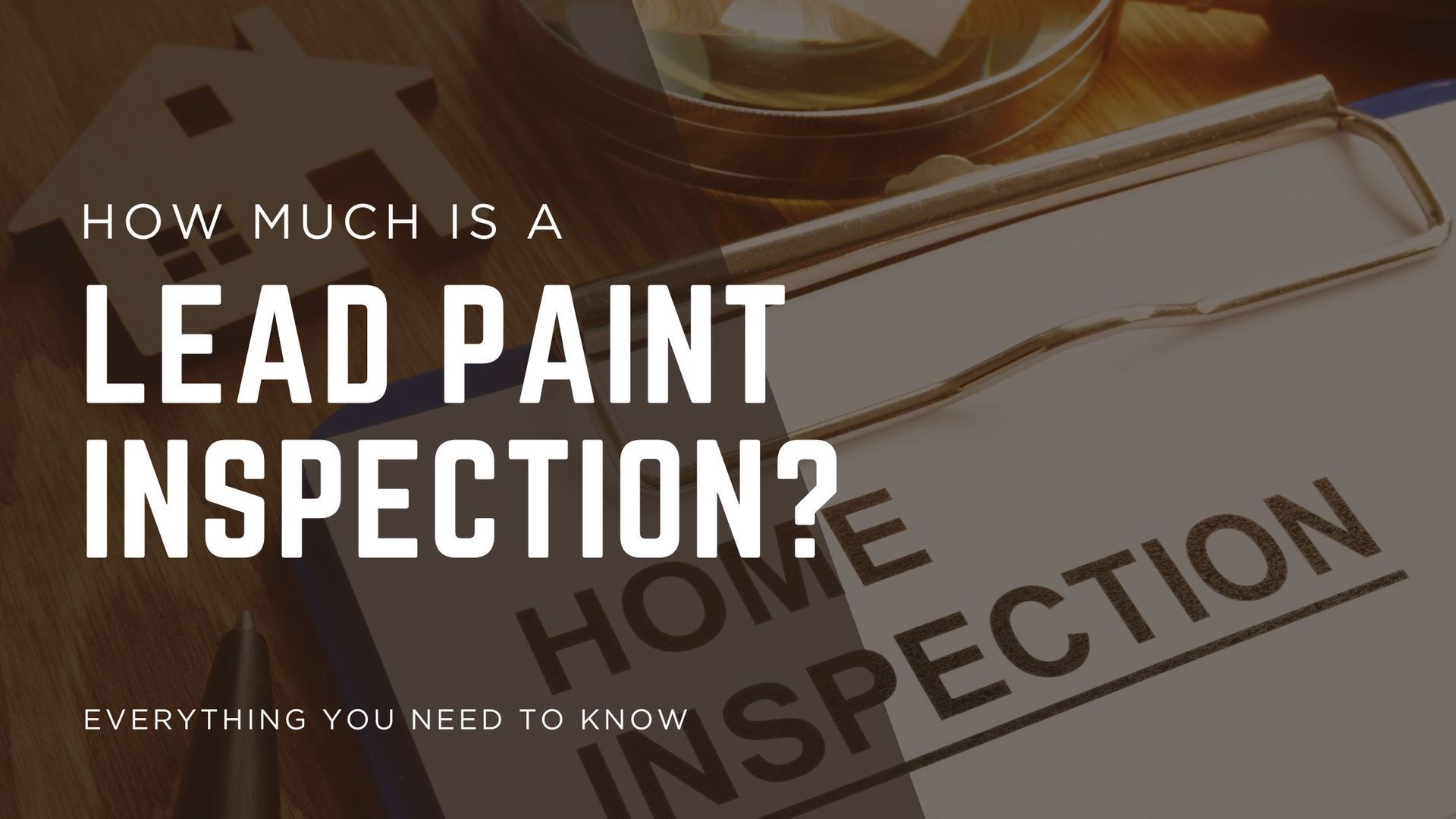What's the difference between an ACP 5 and other asbestos forms?
Entering into a renovation or demolition endeavor in densely populated urban areas such as New York City or the vibrant scenes of New Jersey involves entering a universe of permits, regulations, and, in many cases, specialized environmental documents. Within these, asbestos forms are often mentioned, much to the bewilderment of many: "What's really the difference between an ACP 5 and all those other asbestos forms I'm always hearing about?"
It is a fair and important question. Reading these documents is not merely a box to tick for compliance; it is about protecting health, preventing hidden costs, and staying in control of your project. Let's unpick the most common forms of asbestos you may find, and explain their specific roles in the elaborate ballet of construction and environmental safety.
Why So Many Forms? The Core Purpose
The basis for this apparently convoluted set of documents reduces to one simple reason: asbestos. This mineral fiber, once a wonder substance in building construction due to its strength and resistance to fire, now has a reputation as a serious health risk when its tiny fibers become airborne and inhaled. Since so many older structures (typically those built prior to 1987) include asbestos, thorough regulations are necessary to control its presence in the event of any disruption.
Each type plays a distinct role in this management process – from discovery to clearance – so that every possible exposure risk is recognized, controlled, and recorded.
The ACP 5 Form (New York City)
Let's start with the ACP 5, or Asbestos Assessment Report, as it's often the first form property owners and contractors in NYC will encounter. This document is issued by a DEP-certified asbestos investigator after they've conducted a thorough, on-site survey of the areas where you plan to do work.
What an ACP 5 Tells You (and the Authorities):
- "All Clear" (No Asbestos): The most straightforward outcome. The assessment found no asbestos-containing materials (ACMs) in the specific areas that will be impacted by your project.
- "Asbestos Present, But Not Touched": ACMs were identified within the building, but crucially, your planned renovation or demolition activities will not disturb or impact these materials. This is key for projects where asbestos might be in a different part of the building, or safely encapsulated in an area your work won't reach.
When is it Needed? Think of the ACP 5 as your essential prerequisite for obtaining a Department of Buildings (DOB) permit for almost any demolition, alteration, or renovation work in a building constructed before April 1, 1987. It's essentially the official statement confirming that your project is considered a "non-asbestos project" in terms of friable asbestos disturbance.
The key takeaway: If your project uses existing material in an older NYC building and you require a DOB permit, you'll probably need an ACP 5 to demonstrate that you're not disrupting asbestos.
Other Key Asbestos Forms
While the ACP 5 gives the green light for projects not disturbing asbestos, other forms step in when asbestos will be disturbed, or when dealing with different scenarios and jurisdictions.

In New York City (NYC DEP Forms):
- ACP 7 Form (Asbestos Project Notification):
- What it is: This is the form you use when asbestos-containing materials will definitely be disturbed by your project. It's a formal notification to the NYC DEP detailing that a specific asbestos abatement project is about to take place.
- When it's Needed: If your certified asbestos investigator's survey reveals friable ACMs within your work scope that cannot be avoided, you'll need to hire a licensed asbestos abatement contractor. This contractor is then responsible for preparing and submitting the ACP 7, outlining the full scope of the abatement work, the schedule, and the precise procedures they will follow.
- Key Distinction: The ACP 5 says "no disturbance." The ACP 7 says "disturbance (abatement) is happening."
2. ACP 8 Form (Minor Asbestos Project Notification):
- What it is: This is a simplified notification used for "minor" asbestos abatement projects. These are strictly defined by the quantity of friable asbestos being disturbed (e.g., less than 10 linear feet or 25 square feet).
- When it's Needed: For very small-scale disturbances of friable ACMs that fall below the threshold for a full ACP 7 project. Even for "minor" work, proper handling by trained personnel and official notification to the DEP are still mandatory.
- Key Distinction: It's all about the quantity; the ACP 8 is for smaller-scale abatement than an ACP 7.
3. ACP 9 Form (Asbestos Clearance Report):
- What it is: This form serves as the official "all clear" at the end of an asbestos abatement project. It's issued by a third-party air sampling firm and certifies that the work area is clean and the air is safe for reoccupancy.
- When it's Needed: After any asbestos abatement project (whether it required an ACP 7 or ACP 8) to confirm successful removal and acceptable air quality before anyone re-enters the space without protective gear.
In New Jersey (NJDEP & DCA Forms):
New Jersey operates with its own set of forms and regulations, similar in purpose but different in name and specific requirements.
1. ACR Form (Asbestos Control Report) / DEP-037:
- What it is: This is New Jersey's primary notification form for asbestos abatement projects, submitted to the NJDEP before abatement work commences.
- When it's Needed: Whenever friable or certain types of non-friable asbestos materials are to be disturbed or removed in quantities that exceed specific state thresholds. It's New Jersey's equivalent to NYC's ACP 7.
2. AHERA Inspection Report:
- What it is: While not a "notification" form for abatement, this report is crucial for schools (K-12) and many public/commercial buildings. It details the findings of an asbestos inspection mandated under the Asbestos Hazard Emergency Response Act (AHERA).
- When it's Needed: Often, this foundational inspection report is what first identifies ACMs, subsequently leading to the need for abatement notifications (like the ACR) if those materials are ever slated for disturbance.
Why Getting These Forms Right is Non-Negotiable
Failing to correctly identify which forms you need, or improperly filing them, can lead to severe consequences:
- Project Stoppages: Regulatory bodies like the DOB or NJDEP will issue stop-work orders, bringing your project to a grinding halt.
- Exorbitant Fines: Non-compliance carries steep financial penalties in both states, easily running into tens of thousands of dollars.
- Legal Trouble: Property owners and contractors can face significant legal liabilities for improper asbestos handling, including civil and even criminal charges if workers or the public are endangered.
- Health Hazards: Most importantly, improper asbestos management risks releasing dangerous fibers, posing severe, long-term health threats to everyone on site and in the vicinity.
Understanding the difference between an ACP 5 and other asbestos forms is more than just navigating bureaucracy; it's about executing your project responsibly, safely, and legally. Don't leave it to chance. For expert guidance through the specific asbestos assessment and compliance requirements in both New York and New Jersey, consult with experienced professionals.




